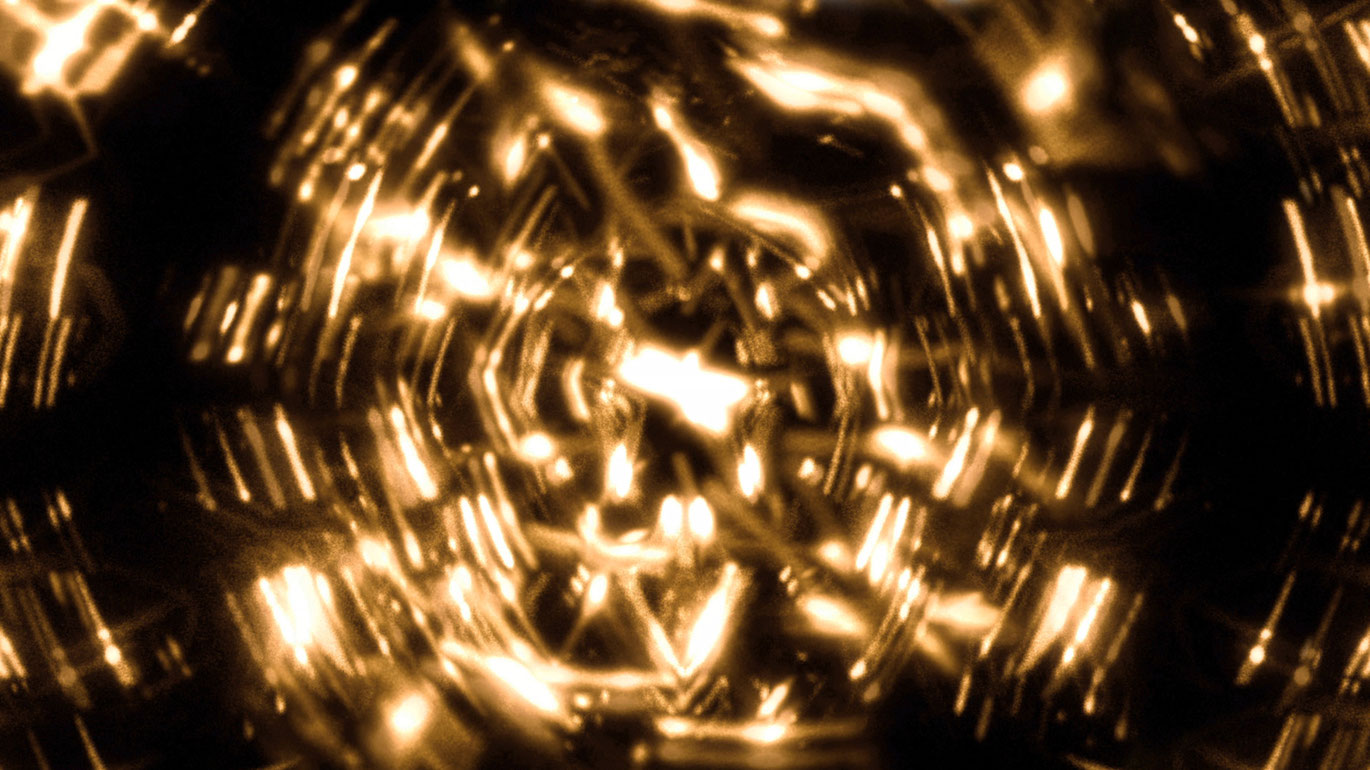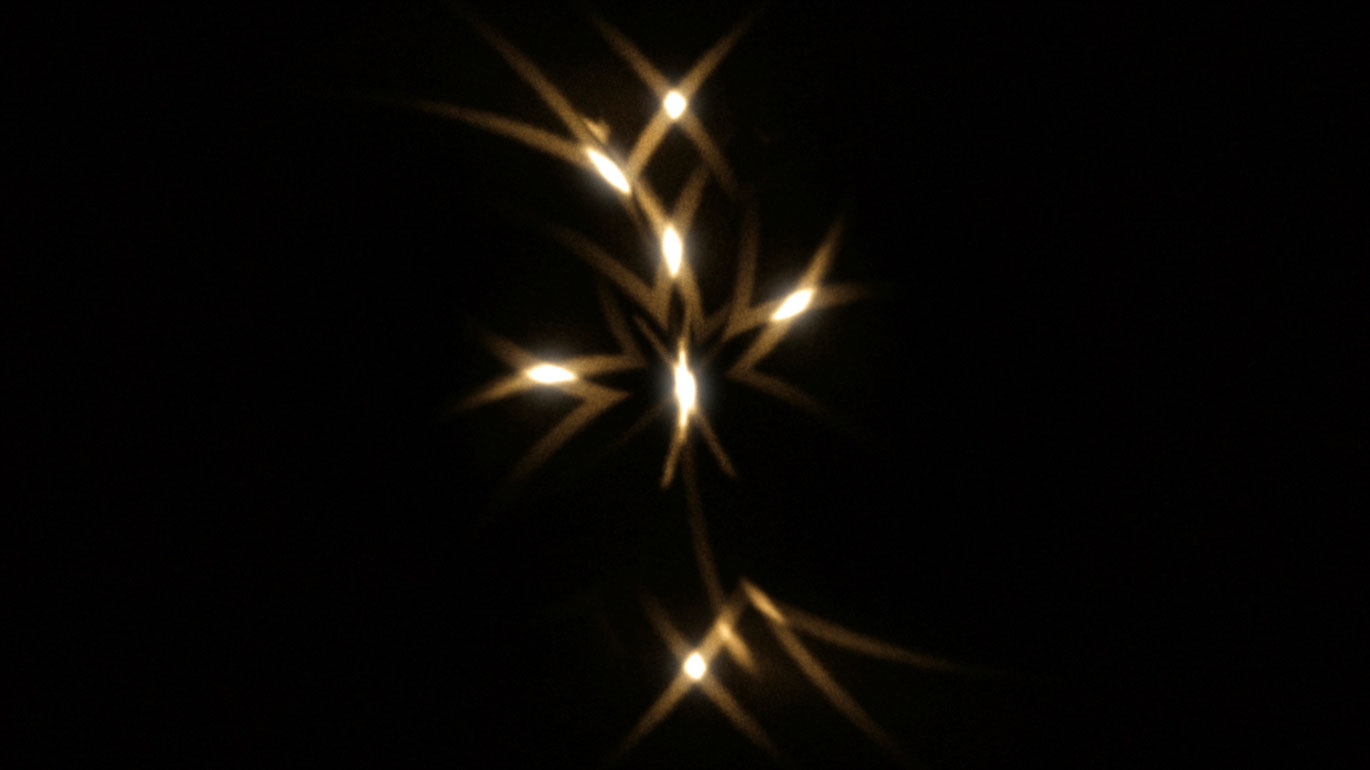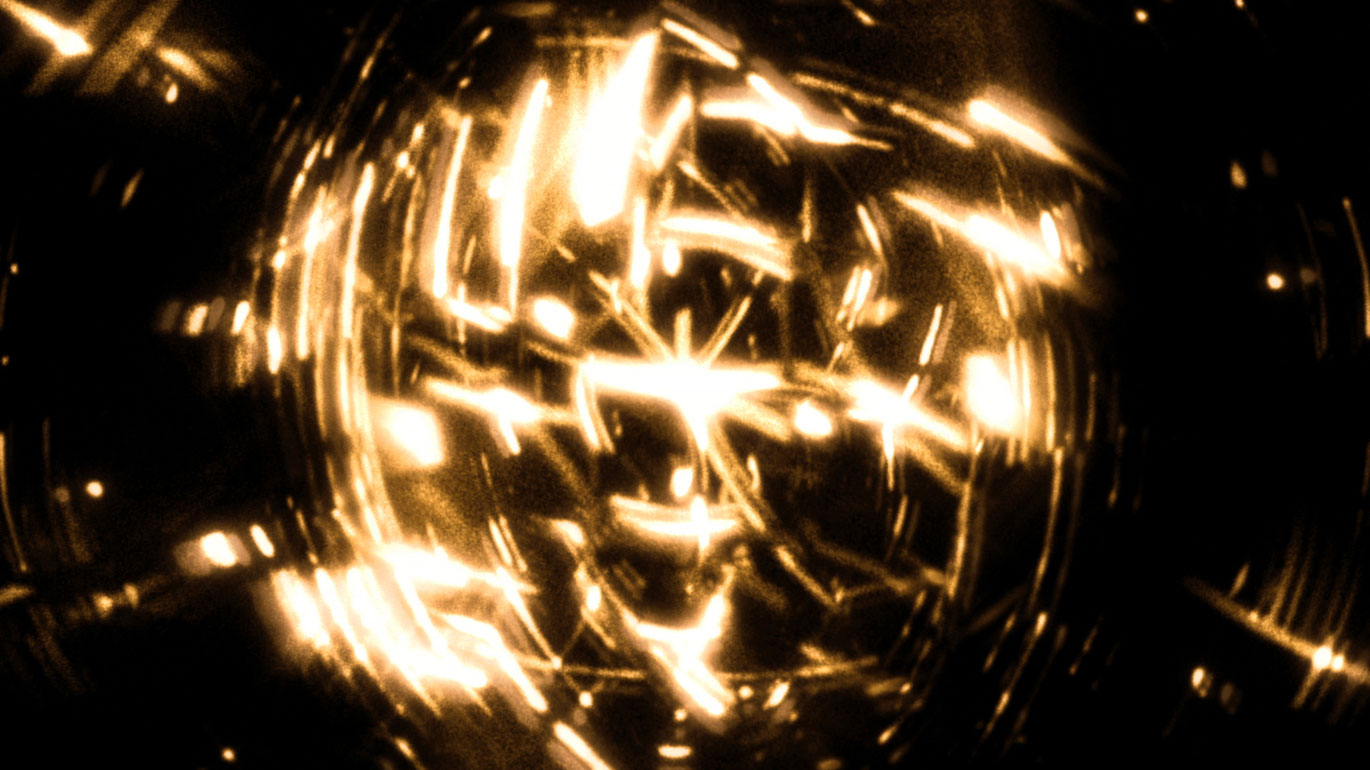THORAX
Rattling, diamond shaped refractions of light: a projector? fluorescent tubes?
It turns out to be more like a "human machine" the filmmaker is dissecting with a fine surgical blade. And so commences an imagined dolly shot into the bloodless, post-humanoid body, travelling into an abstract space that occasionally seems to become concrete of its own accord before dissolving back into glistening streaks and ultimately, wide expanses: a cinematic worm hole leading behind the images, where the sluggish human eye is and must be subject to a trick of light arrangements.
Compared to previous works, Siegfried A. Fruhauf´s THORAX remains almost entirely abstract. But it is all the more intrinsically concerned with an examination of the history of film and perception: Like Marcel Duchamp´s ANÉMIC CINEMA (1926) which serves as its catalyst, THORAX largely avoids glimpsing the organic: once upon a time there was life. And yet in the stroboscopic flickering of THORAX there does appear to be an immaterial torso trying to fight its way back onto the screen. And deep inside, it is not surprising that a heart is beating in that cinematic machine reminiscent of the vaulted tunnel of Cern, in which light particles are accelerated and collide to fathom time and space – structures that Fruhauf has been investigating in his works all along – off and beyond the beaten track of mere representation and what is apparent.
It is said one must not look into the sun, to prevent a child´s visual urge to discover from damaging eyesight. Sharing affinities with Fruhauf´s early film SUN(2003), THORAX in contrast fuels adolescent irrationality and curiosity. At some point, we look with wide open eyes into the dazzling light, accompanied by threatening clusters of sound and subtly arranged provocative sounds. A wildly mesmerizing light. The light at the end of the tunnel. (Sebastian Höglinger)
Translation: Eve Heller
During the production of THORAX I had the historical work ANÉMIC CINEMA by Marcel Duchamp in mind. This avant-garde film classic from 1926 is an intricated dadaistic masterpiece, but the title seems to specify something. The "anemic cinema" refers directly to the machine, the bloodless apparatus behind the cinematic space of illusion. By presenting the viewers a purely abstract image, the human organism was completely removed from the screen. THORAX brings the organism back into projection. But its body no longer carries conventional humanoid features. The anatomy is converted to a purely cinematographic phenomenon, which surrounds, as a play of light, an uncovered throbbing heart. (Siegfried A. Fruhauf)
Ann Arbor Film Festival 2020 - jury statement (Award)
THORAX explores the experience of being inside of electricity itself. Visually and aurally the work pulses with the essence of the electric as it hypnotically throbs and pings with life, a reminder that the body itself runs on a current.
Jury: Lisa Steele, Lynne Sachs, Osbert Parker
Viennale 2019 – Katalogtext
Neue Reize setzen ist der Praxis des Experimentalfilms immanent. Also scheint Fruhauf zur Exploration somatischer Grenzen in einen weitgehend abstrahierten Brustkorb einzudringen. Dort feuern und fehlzünden die Neuronen, kollidieren und stroboskopieren die Synapsen, wie um den menschlichen Wahrnehmungsapparat täuschend direkt mit dem maschinellen Kinokörper kurzzuschließen. Inspiriert von Duchamps ANEMIC CINEMA (1926) schafft Fruhauf eine fantastische, kosmische Reise ins Herz des Lichts – wer ankommt, verglüht. (Roman Scheiber)
Viennale 2019 – catalogue text
Fruhauf immerses us in an illusion of endless movement, changing colour, vibrant perception. But where are we going? Only semiscraps of representational objects can be faintly discerned amidst the flashing kaleidoscope of frames: a diamond, a bridge, a tower, an eye? The ambient soundscape suggests drilling and construction. But a more abstract, intermittent picture forms in our minds: the pulsating heart at the centre of a body; the cinema-engine itself housed inside an imaginary thorax. (Adrian Martin)
THORAX
2019
Austria
8 min



